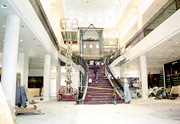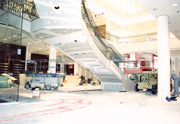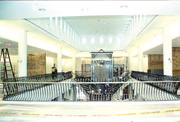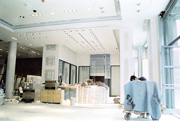

The project was Richard's department store, and if you have a taste for $900 ties, this is the place to shop. The budget, proposed at $9 to $11 million, eventually swelled to $44 million. This was high-end retail space, located in the wealthy town of Greenwich, Conn.
With a virtually unlimited budget, the building owners were given the liberty of free reign. They were allowed to add or subtract at any given time, without consideration of the domino effect these sudden changes would have on the entire project.
What could go wrong with an unlimited budget? Here is a sample:
1. Sets of prints would magically appear, it seemed as if on a biweekly schedule.
2. Items were built and dismantled at a whim, due to the intolerance of static symmetry. Rumors that a $20,000 mahogany chest was discarded circulated.
3. Materials held up in customs for weeks were sent back due to an inconsistency in a particular shade or hue.
4. Four independent contractors submitted plans focusing on their portions of the project, never foreseeing how the project would fit together in its entirety. The commonly used/abused term "correct on site" became too frequent.
5. The GC's site foreman took a three-week medical leave of absence due to the possibility of a nervous breakdown.
6. Out of the six foremen I personally dealt with, one quit construction altogether; one fell off the wagon; another barely endured by working only a partial work week; another escaped the commercial market, fleeing to the peacefulness of Rhode Island suburbia; the last came in fresh like the final baton holder of a long relay, with barely enough internal fortitude to carry him through the final stages.
Thinking back, all of the above was endured to meet an impractical schedule, just so that upper management might enjoy an August sidewalk sale.

The clear story on the clear story
Like any grand collaborative statement, an opera, a film, a democracy, the authors must plan every teleological line, every purposeful angle, leaving nothing to chance. Men and women had put in long hours to breathe life into this project.The focal point of the entire interior of this particular structure is its clear story. Everything within the building, from its splayed staircase to its glass elevator, seemed to point toward the clear story and say, "Hey, look at me!" Unfortunately, this fragile detail was breached or divided by its HVAC system.
In the photos, just a few inches above the 90-degree corner at the ceiling level, there is a visible grate or vent that runs the entire perimeter of the ceiling detail. Behind this vent is a system of heating and cooling ducts, some measuring 4 or 5 feet across, and they sit right on top of the exposed corner. Due to the limits of clearance between the ceilings, some, if not most, of their weight is distributed across perpetual angles. Incidentally, these are all photos of the finished project. Not anticipating writing an article on this adventure, I didn't take any "before" photos.
Regardless of who's at fault, or if some other way of constructing these critical corners could have been addressed, the end result was severe inconsistencies or, put simply, there were horrible waves, both vertically and horizontally, in the exposed and highly visible corners.
With both crews of stair installers and tile applicators waving their tools threateningly at me, I went about the task of straightening out the now-referred-to-as "Eric's corners"--said corners amounting to roughly 4,000 linear feet.

Cornering the solution
Not exactly sure what to do, I toyed with a couple of different new products on the market, including Magic Corner, Straight-Flex, Sure Corner, and even tried an oversized L bead, running a jet-line as a reference point. In themselves, all of these are fantastic products, but where some of the dips and peaks that ran along Eric's corners totaled almost 1 1/2 inches, I had to find another remedy, especially with the timekeeper bearing down.Over the years, I have had great success with some of the lighter-weight/grade compounds and on this particular job, we had a new product called Rapid Coat manufactured by Lafarge. Considering its superb drying time (time being my greatest concern), and based on the amount of fill that was needed, I concluded that this was my fastest and most cost-effective way of subduing this foe.
First, using a straight line, I had to determine the farthest point at which the soffit "stuck out." Next, I snapped a reference line. Using this line, I attached a 3 5/8-inch stud/track¿whichever is available--to both the underside and the face of the exposed corner, to create a linear plane. These two operations have to be performed separately of each other.
For example, attach the track to the underside first, fill the new corner with the Rapid Coat compound, allow drying time, sand, then apply a second coat. Next, remove track, touch up and sand the newly finished corner. Now repeat this entire operation with the face or opposing side of the corner.
This whole operation had to be performed throughout the building's entirety. Throughout this project, I was met with nothing but criticism. Its being an unconventional method, I'm sure there are readers shaking their heads right now. But ultimately, what counts is the finished product and everyone was thrilled, not only by consistency in the details, but by the expediency in which it was executed.
With this success, the project eventually reached a satisfying conclusion for those of us surviving the ordeal. Although, I don't plan to buy a $900 tie anytime soon, at least those that do will have straight corners wherever they look.

Report Abusive Comment